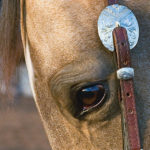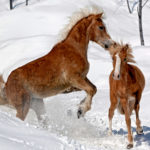Horseball is a game played on horseback where a ball is handled and points are scored by shooting it through a high net (approximately 1.5m?1.5m). The sport is like a combination of polo, rugby, and basketball. It is one of the ten disciplines officially recognized by the International Federation for Equestrian Sports.

The sport originated in Argentina in early 1700. It was outlawed in 1790 due to high mortality among players. In 1941 the Federacion Argentina de Pato was created. In 1953 was declared as Argentina’s national game. The name of the game “pato” derives from the use of a live duck instead of the six-handled ball which is used in the modern sport. The game as its known today, including the use of a ball instead of an animal, was defined in the 1930. It gained success and has spread across Europe and overseas. The International Horseball Federation has sixteen members including seven outside of Europe: Argentina, Brazil, Canada, Cayman Islands, Israel, Pakistan and the United States.
The basic rules involve a team of 4 players (plus replacements offside if necessary) making a minimum of 3 passes between 3 different players of their team and then scoring a goal through a hoop shaped vertical goal. The opposing team can defend by either preventing them from being able to shoot by pushing opponents out of the playing area using their horse’s weight or have the possibility to get alongside the players and pull the ball from their hands. In this situation, each rider must remain seated in the saddle; the first to get pulled out of the saddle loses a penalty. On the other hand, if both stay seated then if the defender manages to keep hold of the ball for more than ten seconds then their teams earns a penalty.
Simple tactics of the game involve crossing paths of players in a same team as this method insures that the opposing team send all their defense to one side of the game whilst another player comes up from behind and gets a clear way through the cleared space. Players can also choose to return to their side if they feel an attack is failing and can ‘cross’ each other, but only if they are players of the same team. This method is quite often used because if a defender is trying to get the ball they usually follow the player with the ball and are therefore going to end up coming face to face with the third player. That however, is forbidden, as in the past head on collisions between galloping horses and riders proved fatal.
When the ball is dropped or falls on the ground, anyone can pick it up so long as they are going in the same way as the way the game was going when the ball was dropped. This is to avoid any riders coming head on whilst someone is picking up, as the player picking up would get hit by the oncoming horse and rider. The rules for pick up are simple; the horse has to be galloping (or at a trot when the teams are of a much younger category, usually when the players are less than 13 years of age) when picking up the ball, whilst stopping is forbidden as it damages the horse’s back and usually means that the player has less of a swing to pull themselves back up, which can often result in falling due to losing a stirrup.





